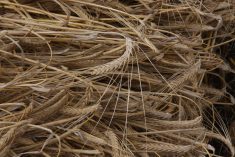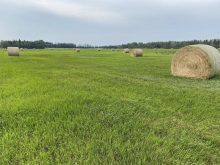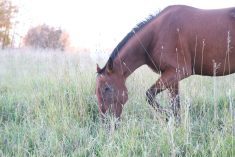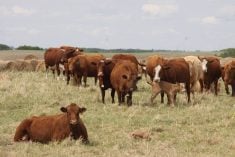Corn silage likely has the highest risk profile although other annual feed crops also show increased DON and ZEA levels
Glacier FarmMedia – Manitoba Agriculture is urging producers to test their feed after a harvest analysis report flagged greater risk of mycotoxin contamination in corn silage.
Early findings from the Alltech 2024 Canadian Harvest Analysis suggested plenty of variability in contamination levels across Canada, but there were particular concerns on corn silage quality, according to a Nov. 7 Alltech release.
“If producers are concerned with feed quality or mycotoxins, they should have their feed tested,” said Shawn Cabak, a forage and livestock specialist with Manitoba Agriculture, in an e-mail to the Co-operator Nov. 14.
Read Also

Farmers asked to keep an eye out for space junk
Farmers and landowners east of Saskatoon are asked to watch for possible debris in their fields after the re-entry of a satellite in late September.
Manitoba has plenty of feed, although early wet weather delayed hay cuts and experts urged producers to watch for quality concerns. That advice extends to annual feed crops.
Cattle have many potential menu options, including byproducts like dried distillers grains or otherwise wasted cast-offs from the grocery system. They can make good use of ammoniated low-quality forage.
It isn’t so much about type of feed, Cabak noted. It’s about making sure the ration is balanced and its ingredients are known.
“If producers know what toxins are present and at what levels, the rations can be adjusted so the feed can still be utilized at a safe (for example) diluted rate,” he said.
Mycotoxins, toxic compounds produced by moulds and fungi, present serious risks to livestock health and performance.
Reynold Bergen, science director at the Beef Cattle Research Council, also stressed the role of testing to avoid mycotoxin problems in the herd.
“This is something we communicate about on a seasonal basis … to make sure it’s top of mind for producers,” he said via email.
Alltech noted a dramatic jump in mycotoxin prevalence in crops. The recent report said more than 95 per cent tested positive for at least one mycotoxin and multiples were often detected.
“Canada has experienced a change in weather patterns from last year, particularly of note the greater rainfall across the Prairies,” said Alexandra Weaver, global technical support for Alltech, in the press release. “As a result, there appears to be greater mycotoxin risk in the Western Canada 2024 harvest than last year.”
Manitoba reported that 59 per cent of barley samples contained DON (deoxynivalenol), with levels up to 3,700 parts per billion. Corn silage in the province showed 100 per cent prevalence of zearalenone (ZEA), peaking at 1,118 ppb. DON was present in 64 per cent of corn silage samples, with a maximum concentration of 3,200 ppb.
Saskatchewan saw 88 per cent of barley silage samples test positive for ZEA, with 30 per cent also containing DON. T2-HT2 toxins were detected in 43 per cent of samples. While overall risk remains moderate, Alltech said, certain samples showed higher concentrations.
In Alberta, barley silage presented lower risks, with 22 per cent of samples positive for ZEA. However, corn silage showed 100 per cent prevalence of ZEA, with levels exceeding 700 ppb. DON and T2-HT2 toxins were also found in the corn silage samples, indicating an elevated risk.
Alltech also pegged ongoing risks from DON and ZEA in Eastern Canada.
For Quebec, 90 per cent of corn silage samples tested positive for ZEA, with levels reaching as high as 1,369 ppb. DON was found in 68 per cent of samples, peaking at 6,782 ppb. T2-HT2 toxins were less prevalent, found in 25 per cent of samples, but still pose a concern for livestock producers.
In Ontario, 63 per cent of wheat samples contained DON, while 45 per cent showed the presence of ZEA. Corn samples also showed DON contamination, with a maximum level surpassing four parts per million. That poses the greatest risk to swine and younger animals, the organization said.
British Columbia’s corn silage samples revealed a range of fusarium mycotoxins, including DON, T2-HT2 toxins, ZEA and other emerging mycotoxins. While the average risk level for dairy cows was low to moderate, some samples exhibited higher concentrations of DON and T2-HT2 toxins.
Overall, Alltech says early testing indicates corn silage is the highest-risk commodity for mycotoxin contamination across Canada. Additionally, barley appears to show a greater prevalence and concentration compared to wheat. Although corn grain testing is pending, producers should remain vigilant as corn is typically at risk for contamination, Alltech warned.


















